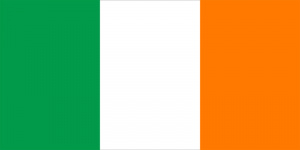Difference between revisions of "Language/Irish/Grammar/Future-Tense"
m (Quick edit) |
m (Quick edit) |
||
| Line 53: | Line 53: | ||
===How to use the FUTURE TENSE in IRISH - YouTube=== | ===How to use the FUTURE TENSE in IRISH - YouTube=== | ||
<youtube>https://www.youtube.com/watch?v=7tSlTRiHEOA</youtube> | <youtube>https://www.youtube.com/watch?v=7tSlTRiHEOA</youtube> | ||
==Related Lessons== | |||
* [[Language/Irish/Grammar/Plurals|Plurals]] | |||
* [[Language/Irish/Grammar/Irish-Modal-Verbs-(need,-want,-must,-can)|Irish Modal Verbs (need, want, must, can)]] | |||
* [[Language/Irish/Grammar/Personal-pronouns|Personal pronouns]] | |||
* [[Language/Irish/Grammar/Conditional-Mood|Conditional Mood]] | |||
* [[Language/Irish/Grammar/Adjectives|Adjectives]] | |||
* [[Language/Irish/Grammar/Imperative-Mood|Imperative Mood]] | |||
* [[Language/Irish/Grammar/Irish-Prepositional-Pronouns|Irish Prepositional Pronouns]] | |||
* [[Language/Irish/Grammar/Pronouns|Pronouns]] | |||
* [[Language/Irish/Grammar/Negation|Negation]] | |||
{{Irish-Page-Bottom}} | {{Irish-Page-Bottom}} | ||
Revision as of 21:36, 25 February 2023
Hi Irish learners! 😊
In this lesson, we will learn about the future tense in Irish. We will look at how to form the future tense, as well as some examples of how it is used.
The future tense in Irish is formed by adding the particle go to the verb stem. This particle is usually followed by the verbal noun ending -faidh. For example, the future tense of the verb téigh (to go) is gofaidh.
The future tense can be used to express a variety of meanings, including:
- Making predictions about the future
- Expressing intentions
- Expressing willingness or unwillingness
Here are some examples of how the future tense is used:
| Irish | Pronunciation | English Translation |
|---|---|---|
| Beidh mé ag obair | bay meh egg o-bir | I will be working |
| Ní bheidh mé ag dul | nee bay meh egg dool | I won't be going |
| Beidh sé ag caint | bay shay egg kint | He will be talking |
| Ní bheidh sí ag éisteacht | nee bay shee egg ay-shtokht | She won't be listening |
| Beidh siad ag imirt | bay sheed egg im-irt | They will be playing |
| Ní bheidh sibh ag caint | nee bay shiv egg kint | You won't be talking |
It is important to note that the future tense is not used to express habitual actions. For example, the sentence Beidh mé ag léamh gach lá (I will be reading every day) is incorrect. Instead, the present tense should be used: Tá mé ag léamh gach lá (I am reading every day).
The future tense can also be used to express a wish or hope for something to happen in the future. For example, the sentence Go mbeidh sé ag teacht (I hope he will come) expresses a wish for someone to come in the future.
Finally, the future tense can also be used to express a command or request. For example, the sentence Gofaidh tú an leabhar a léamh (You will read the book) expresses a command or request for someone to read a book.
In conclusion, the future tense in Irish is used to express a variety of meanings, including predictions, intentions, willingness, and commands. It is important to note that the future tense is not used to express habitual actions.
➡ If you have any questions, please ask them in the comments section below.
➡ Feel free to edit this wiki page if you think it can be improved. 😎
Videos
How to use the FUTURE TENSE in IRISH - YouTube
Related Lessons
- Plurals
- Irish Modal Verbs (need, want, must, can)
- Personal pronouns
- Conditional Mood
- Adjectives
- Imperative Mood
- Irish Prepositional Pronouns
- Pronouns
- Negation
